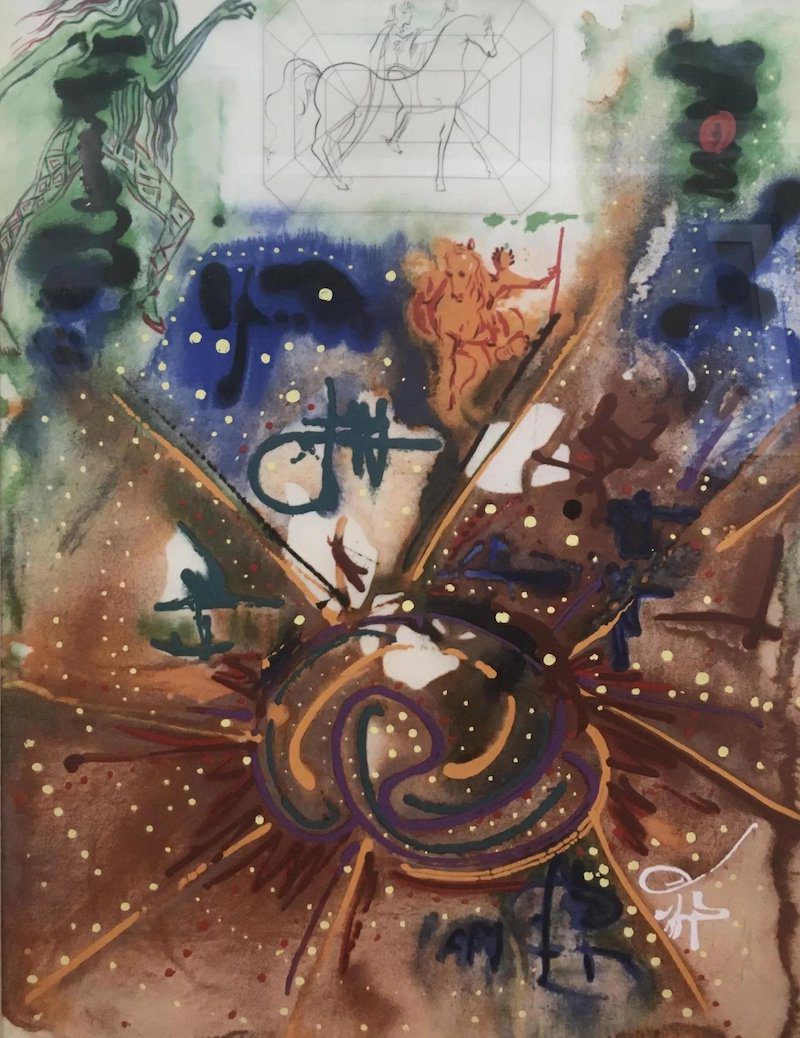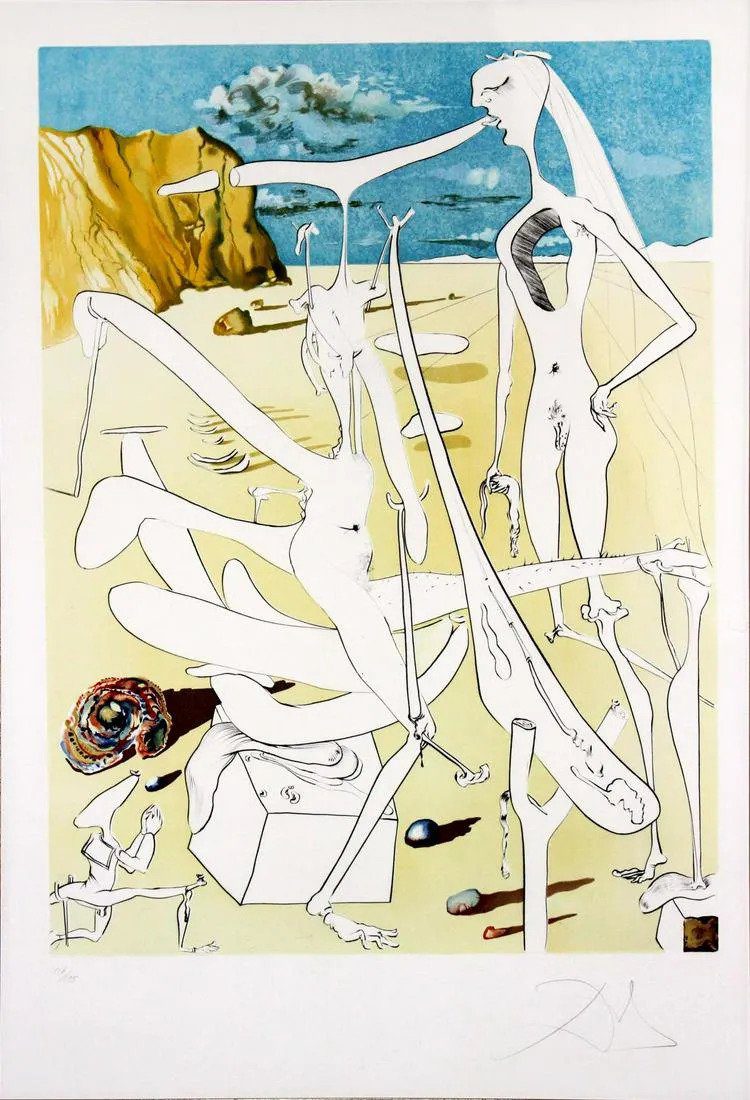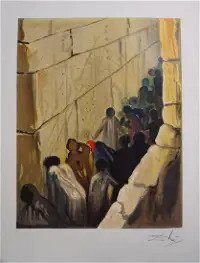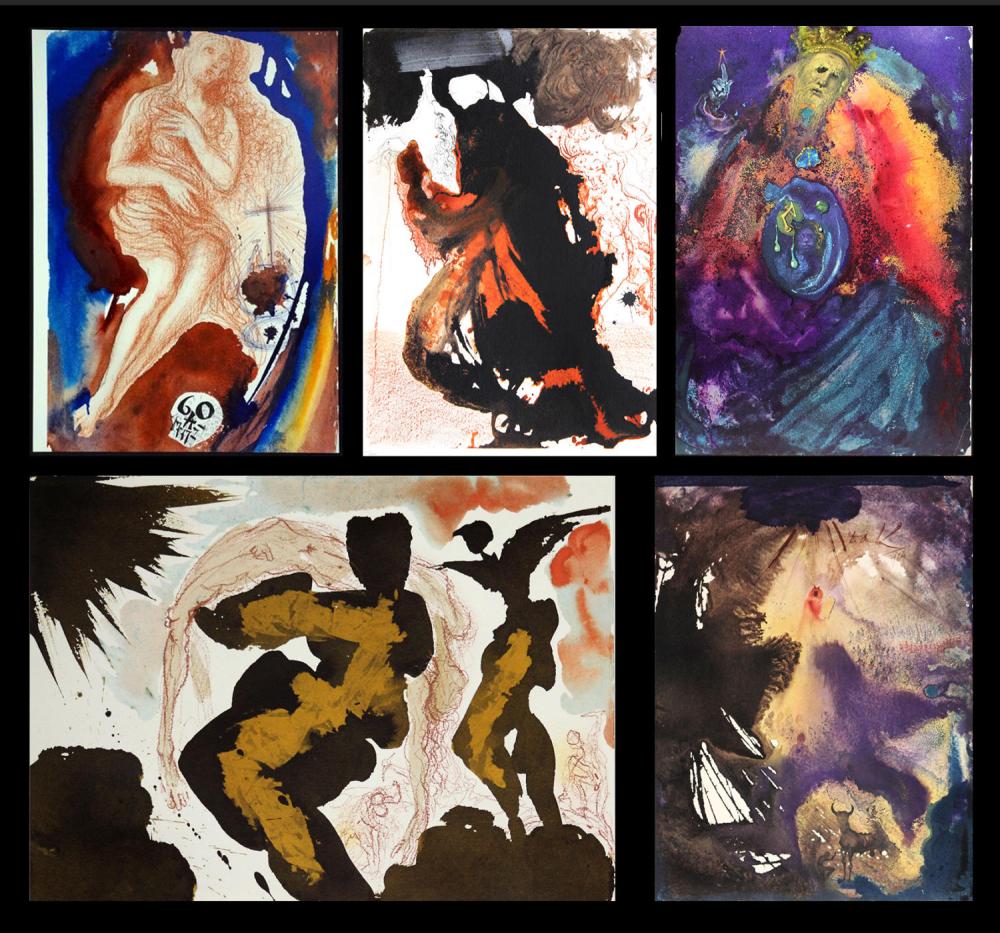When it comes to surrealist art, no name is as famous and respected as Salvador Dali. This eccentric man reshaped how the art world thought, and made it more in his image. Even today, over 30 years after his death, Dali’s influence and artwork continue to push boundaries and defy expectations. Although ironically, Dali became such a household name that his avant-garde and counterculture pieces are now fully embraced as mainstream. Dali’s success illustrates that anything, no matter how genre-defying, can become the norm if it becomes famous enough.
Biography
Early Life
Salvador Dali was born 10 months and 10 days after his older brother, also named Salvador, who died at the age of one and a half. Salvador the second was born in 1904 to parents Salvador and Felipa in Catalonia, Spain, near the French border. Salvador Senior was a middle-class lawyer, while Felipa was a housewife. Dali’s mother encouraged his artwork and passion, while his father was a pretty strict disciplinarian. This dichotomy helped shape Dali’s worldview and likely influenced his surrealist work, even if just subconsciously.
One person who influenced Dali was his brother, whom he never got to meet or get to know. Dali once remarked that his brother “was probably the first version of myself but conceived too much in the absolute. We resembled each other like two drops of water, but we had different reflections.” Dali even painted his brother in 1963 with the aptly named piece “Portrait of My Dead Brother.”
Dali’s early life was filled with fond memories of family and friends, especially when they moved to France in 1912. Dali loved playing soccer (aka football) with his friends, particularly when they would take holiday trips together.
Education and Career
In 1916, Dali went to school at the Municipal Drawing School at Figueres, where he practiced drawing, especially with charcoal. That same year, he discovered his love of painting during a family summer trip to Cadaqués. At 13, Dali’s father, undoubtedly proud of his son’s artistic talents, arranged for an exhibition of his charcoal drawings in the family home. Two years later, Dali held a formal presentation at his school.
The year 1921 was a formative one for Dali, as he was introduced to Cubism and Futurism. His family friends, the Pichots, showed Dali what futurism was all about, and he discovered cubism through his uncle, who owned a bookshop in Barcelona. At the time, Pablo Picasso was making a name for himself, and as a fellow Spanish artist, his work likely struck a chord with Dali.
It was also in 1921 when Dali’s mother died. As an ardent supporter of his art, losing her was devastating. Dali said it “was the greatest blow I had experienced in my life. I worshipped her. I could not resign myself to the loss of a being on whom I counted to make invisible the unavoidable blemishes of my soul.”
The following year, Dali went to the Real Academia de Bellas Artes de San Fernando in Madrid and lived on campus. His college years were also heavily influential, as he met various other creatives such as Pepín Bello, Luis Buñuel, and Federico García Lorca. Lorca and Dali had an intense relationship, but Dali said he always rejected Lorca’s sexual advances. Unfortunately, their friendship came to a sudden end when Lorca was killed at the outset of the Spanish Civil War in 1936.
During his tenure at the Academia de Bellas Artes, Dali often went to the Prado Museum in Madrid. Since the museum focused on classic works, Dali devoted himself to studying them so that he could learn how to turn classical art into something more modern and surreal. However, at the time, he was more focused on cubism and futurism and hadn’t yet discovered surrealism.
In 1925, Dali held his first cubist exhibition, which drew critical acclaim and success. The following year, Dali met one of his idols, the legendary Pablo Picasso. It was Picasso who introduced Dali to surrealist artistry, although it wasn’t until 1927 that Dali started to go, full surrealist.
As with all great artists, Dali pushed the envelope and ruffled more than a few feathers along the way. Not only did his art become more surreal, but also sexual. There was a great scandal in 1928 when the Barcelona Autumn Salon rejected one of Dali’s paintings for being too explicit. The scandal was in the local papers and helped cement Dali’s celebrity status.
For the rest of his life, Dali kept his surrealist persona and made sure to emulate the “bizarre” side of his personality. However, his attitudes and artistic focus shifted several times. For one, he returned to Spain after World War II and supported the Franco regime, which earned scorn from his fellow artists, including Picasso, who never acknowledged him again. Later, Dali embraced Catholicism, so religious iconography started popping up in his work.
Over the years, Dali experimented with different mediums, poses, and subjects. He was indeed an artist who didn’t want to be put in a box, so he broke boundaries whenever possible.
Death
In 1980, Dali turned 76, and he had multiple health problems, including depression, drug addiction, and Parkinsons -like symptoms (including an arm tremor). Two years later, his wife Gala, whom he married in 1938, died. Her death made Dali’s health worsen, especially his depression. He received a pacemaker in 1986 but was hospitalized in 1988 for heart-related problems. He died in January of 1989 at the age of 84.
After his death, Dali was buried underneath his Theatre Museum in Figueres, 450 meters from the house in which he was born. His resting place is also across the street from the church where he was baptized and had his first communion.
The Legacy of Salvador Dali
Because Dali was such an accomplished and renowned artist, it’s impossible to encapsulate his legacy in a few short paragraphs. While he did have his share of faults (as all humans do), his love of art and passion for pushing boundaries made him a household name. Today, it’s virtually impossible to talk about surrealism without mentioning Dali’s name. It’s hard to imagine what surrealism would be without him, but that’s a thought experiment for another time.
However, unlike some other great artists, Dali seemed to revel in his iconic and legendary status. In 1986, shortly after getting his pacemaker, Dali told an audience at his Theatre Museum, “When you are a genius, you do not have the right to die because we are necessary for the progress of humanity.” A bit on-the-nose, but more accurate than false.
Famous Works
If you’re interested in purchasing Dali artwork, check out these famous pieces for sale at auction below:

This etching is of a donkey wearing human clothes and reading a book about seemingly other donkeys and similar creatures. In the background, we see a dripping skull looming over the figure. One of the great things about surrealism is that it’s fully open to interpretation. Is the donkey a representation of man’s dependence on pack animals? Does the skull represent how animal labor was replaced by machinery? Or is it just a cool etching that looks funky? Who’s to say?

Surrealism doesn’t always mean realistically rendered images in bizarre situations. Sometimes, abstract artwork is far more compelling than any iconography one could imagine. This piece offers some insight into the machinations of Dali’s mind. Again, it’s fully open to interpretation, and there are so many hidden details that one could stare at it for hours.
Infraterrestrials Adored by Dali

It’s no secret that Dali was influenced by noted abstract painter Pablo Picasso, and this piece seems like a reference to his old mentor and idol. These inhuman figures are standing on a beach, doing something to each other, while the viewer is left guessing what that is. A painting that does not explain, but then again, does surrealism need explaining?
The Wailing Wall, from Dali’s Aliyah Suite

In 1968, Dali created a suite of 25 works entitled “Aliyah”, using gouache, watercolors and Indian ink on paper, which commemorated the 25th anniversary of the formation of the State of Israel. The term “Aliyaha”, refers to the migration of Jews to Israel from all of over the world. In the Aliyah Suite, Dali interpreted evocative and powerful scenes from modern Israel and from old testament text. These important works, were then produced as rare and original limited edition lithographs and can be found today at auction.
This depiction of the Wailing Wall is may not be as surreal as others in the Aliyah suite, but it’s still packed with raw emotion. As with all great artwork, this Salvador Dali lithograph isn’t trying to depict the scene as it exists in real life but showcases the emotion and energy of its subjects. This is a piece you experience, not one simply you look at.
If you want to find this piece and many other rare and limited edition works by Salvidor Dali, please view the Salvador Dali collection on Dane Fine Art or contact us to find a specific Dali lithograph you are searching for.

